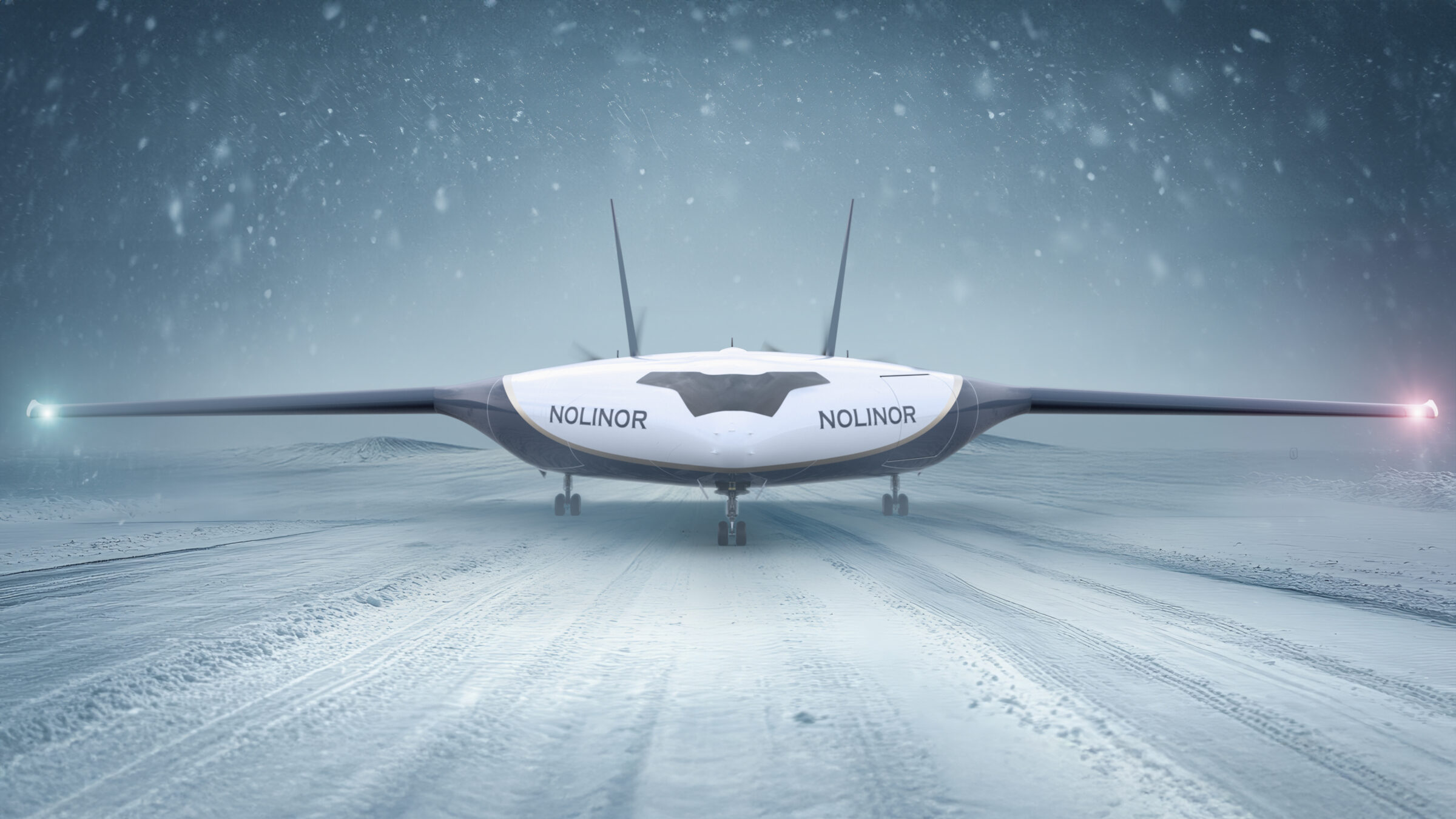Nolinor Aviation to expand northern operations with new blended-wing planes
Plan calls for adding new more fuel-efficient aircraft to fleet by end of decade
Nolinor Aviation purchased production slots of the Kona blended-wing-body aircraft, which are expected to be in production before the end of the decade. (Image courtesy of Natilus)
A Montreal-based commercial charter airline has announced plans to expand its northern service by increasing its fleet of aircraft by the end of the decade.
Nolinor Aviation has placed orders for Kona aircraft from Natilus, a U.S.-based manufacturer whose website says it builds hyper-efficient blended-wing-body planes designed to carry cargo and people.
“Blended-wing-body” describes the aircraft’s body shape, which offers a smooth transition between the fuselage and wings. It increases aerodynamic efficiency by providing lift with a smaller engine than many other planes of similar size.
Nolinor said in a Feb. 4 news release it would purchase “multiple” planes, but did not specify how many.
“Our customers requested that we expand our aircraft by looking for new solutions for the future, so this is our way to find a way to serve our customers up North in the Arctic,” Yves Bergeron, Nolinor’s vice-president of operations, said in an interview.
Nolinor will use the new planes to serve its customers in northern locations where it is possible to do so and will carry food, materials, or mining equipment, Bergeron said.
The aircraft design is expected to reduce fuel consumption, provide more cargo space and offer 50 per cent lower operating costs compared to similarly sized traditional tube-and-wing aircraft, said Jason Wallace, vice-president of marketing at Natilus.
Kona planes are designed to operate in challenging environments and land on gravel and unpaved runways. They also have the capability to take off on shorter runways.
“There’s massive demand for new aircraft, and what better time than to introduce a better design for commercial fleets for both cargo and passenger sides than what we’re doing here at Natilus,” Wallace said.
“When we talk about blended-wing, it’s really talking about the shape and design of the fuselage and how that blends into the wing itself to provide more lift.”
Natilus is currently building the first full-scale prototype of the Kona aircraft, which is anticipated to take flight within 24 months. Production is expected to begin before the end of the decade with the aircraft being available in either 2029 or 2030, Wallace said.





Can it heat up cookies? Asking the real questions here.
A year or two ago , there was a story about flying blimps working in the north . now , its flying wings. illusions.
There is no shortage well intentioned but still delusional companies that tragically fail to fully comprehend the complexities of actually delivering a design that they think looks great on paper.
I’m still waiting for the flying cars that I read so much about in the 1970s.
When this press release hit the aviation industry the general consensus was that “I’ll believe it when I see it”.
Yep , I used to love reading Popular Mechanics magazine , when i was i kid in the 70s.
What is this thing supposed to replace? The website claims it can carry 3.8 tonnes of cargo for 70% of the fuel compared to…something.
An ATR72-500 cargo can carry 7.7 tonnes of cargo, which means that you need two trips of the Kona to match one ATR trip, but because you need two trips you’re using twice as much fuel.
And it claims 2.5 times the cargo capacity, but as far as I can tell that mean’s it’s comparing itself to something like a a Twin Otter. So what is it replacing?